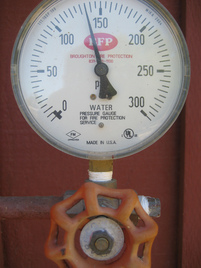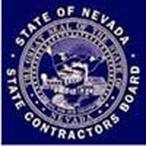We have all heard that high blood pressure is the “silent killer,” Silent because there are no symptoms until a blood vessel or artery ruptures and results in major problems. The water supply system in our dwelling works exactly the same way. Out of sight, out of mind until that terrible day that a pipe or fitting blows apart. If you are home at the time you may be able to shut off the main water supply valve before too much damage occurs, but there will still be damage. It only takes 5 to 10 minutes for a pressurized water line to inundate a space with water and it will not stop running until Lake Mead empties out. Many people do not have a shut off valve in their garage, they are in the sidewalk where the meter is. If you do not have a meter shut off tool at the ready you will not be able to turn off the water in the sidewalk either. The meter has unions with raised posts that require a forked tool. They can and should be purchased at a home improvement store for less than $20.
Many houses built in the 80’s and 90’s were plumbed directly from the meter box in the sidewalk to a manifold somewhere in the house, usually to the water heater, and then rolled copper tubing underground to the bathrooms. They also would pipe from the meter box to a water softener loop in the garage and then to the rest of the house. But there was no code which required an easily accessible shut off valve in the dwelling. It all depended on the approved plans when the house was built.
In the past 2 weeks I have been to 4 houses to make repairs and found that their water pressure was over 100 psi. This is dangerously high pressure. 60 psi is more than adequate and it is in the code book that if the street pressure is more than 80 psi a PRV must be installed. They each had pressure reducing valves that were no longer doing their job. Pressure reducing valves go bad after 10 to 15 years and must be replaced. The cost is $250 to $300.
Another very beautiful home in Anthem had no shut off valve anywhere but the sidewalk. The customer told me that whenever they turned off the water it had to be done there. I found this hard to believe so the customer and I scoured the house looking for a valve. Perhaps they put it in an access panel somewhere, maybe in the laundry room or a utility room.
I checked their pressure and it was 103 psi. It cannot be determined where the main water line enters the house and this is where a PRV would need to be installed. This is a nightmare scenario. Having to open walls in a million dollar home to find the water main is idiotic.
I told the homeowner, who happens to be an attorney, that his pressure was 103 psi, way too high. He told me he did not know what that meant. I took that to mean that he thought I was trying to do unnecessary work as I am confident he understands the concept of high blood pressure.
He said he would get back to me, as did all these customers. If it ain’t broke don’t fix it.
I have written other articles on this subject but it seems lately, more and more, I am seeing bad PRV valves as time goes by.
Oh well, I know a fully licensed, certified and highly professional water damage and restoration company that I will be happy to recommend when that terrible day comes.
And it will come.






